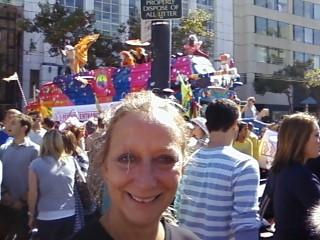Cathy Meadows, M. A., Clinical Psychology
RESEARCH-Night Light Disrupts Circadian Rhythm Causing Ill Health

RESEARCH: NIGHT LIGHT CAUSES CANCER-DISRUPTS CIRCADIAN RHYTHMS-
Light Pollution: Night Skies, Dark No More
Light Pollution: Night Skies, Dark No More
By Ben Harder
Posted March 14, 2008
The night is not what it was. Once, the Earth was cast perpetually half in shadow. Man and beast slept beneath inky skies, dotted with glittering stars. Then came fire, the candle, and the light bulb, gradually drawing back the curtain of darkness and giving us unprecedented control over our lives.But a brighter world, it is becoming increasingly clear, has its drawbacks.
A study released last month finding that breast cancer is nearly twice as common in brightly lit communities as in dark ones only added to a growing body of evidence that artificial light threatens not just stargazing but also public health, wildlife, and possibly even safety.
Motivated by such trends, more than two dozen cities worldwide will go dim on March 29 in an hourlong demonstration. At 8 p.m. local time, Atlanta's and Chicago's tallest towers, the Phoenix Suns' arena, and San Francisco's Golden Gate Bridge will join many other sites in turning off their lights. According to the World Wildlife Fund, which is organizing the event, an estimated 2.2 million Australians switched off their lights or took other action during "Earth Hour" last year in Sydney, briefly reducing that city's energy use by more than 10 percent.
People who are working while others are stargazing may face the greatest risks. Hormonal disturbances triggered by nighttime exposure to white or bluish light can disrupt circadian rhythms and fuel the growth of tumors, experiments show.
Two decades of research indicate that women who work night shifts have unusually high rates of breast cancer, and some data suggest a parallel effect on male workers' prostate cancer rates.
Last December, a unit of the World Health Organization deemed shift work a probable human carcinogen.Yet light and cancer may be even more fundamentally linked. In last month's study, a team that included Richard Stevens, the University of Connecticut Health Center epidemiologist who first proposed the connection, compared satellite images of Israel at night with maps showing where cancers are most common. Its analysis suggests that 73 percent more breast cancers occur in the country's brightest communities than in its darkest.




No comments:
Post a Comment
Thank you for your comments.